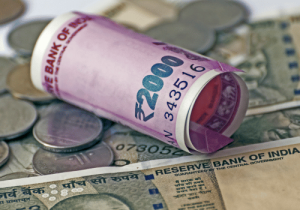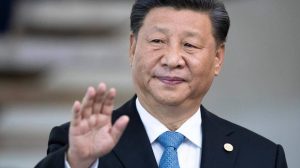Beyond demographic shifts, Vietnam’s consumer markets are experiencing significant changes in behaviors as incomes rise and as innovation in business models and technology accelerates. Five shifts are notable: digitization’s impact on distribution channels, increasing use of consumer-facing ecosystems, a growing preference for domestic brands, greater interest in “conscious lifestyle” products, and a lessening of geographic differentiation.
New channel mix
In most consumer markets, traditional grocery stores are being replaced by modern stores, especially supermarkets and convenience stores (larger hypermarket formats are still present but growing less rapidly). But in Vietnam, beyond the traditional narrative of retail modernization, digitization is rapidly changing the way Vietnamese shop. As in several other Asian markets, leapfrogging in two arenas are under way. First, e-commerce is developing so rapidly that it is conceivably bypassing the usual development from traditional to modern store-based retail. By 2025, e-commerce in Vietnam could be almost as large as offline modern grocery retail.11 Second, traditional trade is digitizing rapidly too. Vietnam has more than 680,000 offline outlets selling basic food and fast-moving consumer goods (FCMG). Local players like Telio and Vinshop are offering digital ordering and digital payments options to these traditional food and FMCG outlets.
As those digital players gradually compete with traditional business-to-business (B2B) players such as wholesalers and cash-and-carry stores, traditional trade can become increasingly connected. The process could disintermediate traditional distributors and wholesalers, which could lead to greater efficiency.
A big convergence
Consumer demand is being reshaped by a “big convergence” in which digital ecosystems are aggregating many consumer needs and serving them with varying degrees of integration. At the most integrated end of the spectrum are super apps, which offer a one-stop digital shop for customers through multiple uses, functions and complementary services. As consumer-facing ecosystems have emerged and grown rapidly, players in consumer packaged goods (CPGs) and retail have had to rethink their stance on partnerships.
There is still headroom for growth in Vietnam’s digital ecosystems. In many economies around the world, the disruption associated with the COVID-19 pandemic accelerated digital adoption across categories, including in groceries, entertainment, digital healthcare, real estate, and education. This acceleration is evident in Vietnam. From online school classes to food ordering, Vietnamese consumers have increased the pace of their digital adoption and use. One study found that 41 percent of all digital consumers in Vietnam are new consumers, and 91 percent of these new consumers said they intend to continue their use of digital tools after the pandemic.
Greater preference for homegrown brands
Asian brands are maintaining a strong position in many consumer-facing categories across Asia, including in Vietnam. In FMCG, for instance, Asian brands increased revenue at 9 percent a year, compared with 5 percent for global non-Asian brands.12 Conventional wisdom has held that the emerging middle class in Asia tends to favor buying global (Western) brands, but this does not hold true—or at least not in every category. Local players have built successful brands in Vietnam, including VinFast in the automotive sector and Masan, Nutifood, and Vinamilk in FMCG. Local players have also been successful in modern retail. Foreign retailers were amongst the pioneers of modern trade in Vietnam, but most of the fastest-growing brands of retail chains today are local players, such as Bach Hoa Xanh, Coop Mart, and VinMart.
Conscious lifestyle choices
Consumer lifestyle and behaviors that take into consideration other people, the environment, and society are often associated with more developed economies. However, surveys suggest that many Vietnamese consumers are emulating this behavior. Reusable straws and mugs in coffee shops, tote bags at supermarkets, and eco-friendly fashion brands are now common sights in cities throughout Vietnam. In one consumer survey, 91 percent of Vietnamese respondents said they were aware of and were participating in a conscious lifestyle. In contrast, 86 percent of respondents in Indonesia, 73 percent in Thailand, and 75 percent in Malaysia said the same. Notably, 84 percent of Vietnamese respondents said they were willing to pay a premium for conscious-lifestyle products. This suggests potential for premiumization in the market.
Of course, what consumers say may not predict what they actually do. Indeed, there is ample evidence that willingness to pay premiums for eco-conscious products is not yet sufficient in most Asian markets. Nevertheless, Vietnamese consumers are clearly paying more attention to sustainability, social responsibility, and labor conditions, and many are willing to take action through their wallets.
Less emphasis on geographic differentiation, including the traditional north–south divide
Vietnam has a very distinct geography and history. It has two large cities of roughly equal size, separated by more than 1,100 kilometers. These cities are Vietnam’s largest consumption centers but have very different climates (and therefore different fashion) and histories, leading to significant variations in consumer behavior and preferences. Therefore, the traditional marketing approach was to deploy tailored communications to reach the specific preferences of customers in the north, south, and cities in between. Such large differences in the consumer landscape within Vietnam could be a hurdle for brands, especially those of players who are unfamiliar with local context.
Paradoxically, however, while Vietnamese consumers are segmenting and diversifying, cultural differentiation by geography appears to be diminishing. Domestic travel is increasing and connecting Vietnam more than ever before. The flight route from Hanoi to HCMC is the second busiest in the world, with close to a million seats. Consumers across the country’s regions are becoming more affluent. Digital media are harmonizing brand communication; brands that have established a regional stronghold are now capturing other regional markets. In short, different parts of the country and different types of consumers are converging.
A telling example of this convergence is the beer industry. In 2015, brands distributed nationally without a local stronghold had about 32 percent of economy-wide volume, with 37 percent for brands focused on the south, such as Saigon Beer, and 24 percent for northern or central-focused brands such as Hanoi Beer or Carlsberg’s portfolio. However, by 2020, the share of national brands had risen to about 40 percent, while the share of northern and central brands had declined.13 Thus, even as Vietnam’s consumer market is diversifying, geographical stereotypes about Vietnamese consumers could become obsolete.
Implications for companies wooing Vietnam’s consumers
Vietnam’s consumer markets are changing rapidly—diversifying, modernizing, and digitizing. Companies can find considerable momentum to tap into, but to position themselves in a way that can win the hearts and minds of Vietnamese consumers, they need to answer questions about which markets to enter, how to communicate with consumers, and how to maintain a combination of localization and agility.
Where to play?
Companies in Vietnam need to take a broader view of where to compete than sufficed in the past. Success today requires moving beyond the two-city approach and considering new channels in light of changing technology.
In more than two cities. Except in a few sectors such as high-end luxury, the era of focusing exclusively on Hanoi and HCMC is over. Competitive local consumer-facing industries are already pursuing rural consumers over a broad geographic area. Companies that have confined themselves to serving consumers in Vietnam’s two leading cities will need to broaden their approach. To reach around 50 percent of the population with incomes of more than $22,000 per year, companies typically need to plan distribution to the top 15 cities. Major retail players are seeking to capture new opportunities by investing not only in key cities but also in a broad swath of nonurban areas whose overall population is large (Exhibit 3).
In more than traditional channels. Companies in Vietnam also should take a flexible distribution approach to embrace the changes occurring in channel mix. Vietnam’s hybrid and fast-changing channel mix will pose challenges. Companies need to be agile in positioning themselves for a combination of a large share of fragmented traditional trade, a rapidly growing but still unpredictable online B2B sector, a constantly recomposing modern retail landscape, and relatively new e-commerce that is one of the fastest growing in Southeast Asia. In this context, competing in Vietnam requires not only the right strategy, but also capabilities in channel management, key account management, pricing, and promotions optimization.
How to communicate with Vietnam’s new consumers?
Businesses that succeed in Vietnam will have to upgrade their messages and channels of communication to reach today’s consumers. More often than not, this involves digital channels, as well as an awareness of new norms and values.
Double down on digital engagement. Vietnamese consumers across age groups and regions are digitally connected. While online retail is just taking off, marketing and brands will need to make full use of social media, user reviews, social commerce, live streams, and online ecosystems to gain early traction.
Build relatable brands with a conscience and, if possible, a local vibe. Vietnamese consumers are adopting the kind of conscious consumption that is more prevalent in economies further down their development path. To capture their attention and their wallet, companies may consider localizing brands that “fit” the new zeitgeist. Approaches that could make brands relatable include using icons and champions of local culture and designing products that focus on local heritage. To some extent, Asian (rather than Vietnamese) brand image and ambassadors have also sometimes proven suitable; some brands recruit Korean and Japanese ambassadors with a local audience. Importantly, adopting the norms and values of the modern, socially conscious consumer is a must.
How to operate?
Talent localization and agility have become critical. In the face of rapid change, companies in Vietnam will also likely need to reinvent their operating models around four axioms:
- Recruit, train, and promote local talent. Talent management grows in importance as capabilities needed to compete become increasingly complex (for example, to digitize businesses).
- Update the operating model. Shape an operating model that favors the speed of local innovation and personalization, in response to the fast development of Vietnamese consumers’ behavior.
- Reallocate resources rapidly. As conditions in the market change, companies need to move resources rapidly between product lines or distribution channels.
- Build the ability to enter cross-sector partnerships. In an increasingly interconnected world, such partnerships are likely to become a source of performance.




















